The 4th Global Biodiversity Outlook (GBO 4) was officially launched on 6 Oct 2014, during the opening day of the Twelfth Meeting of the Conference of the Parties to the Convention on Biological Diversity (COP 12) in Pyeongchang, Korea. Global Biodiversity Outlook (GBO) is the flagship publication of the Convention on Biological Diversity. It is a periodic report that summarizes the latest data on the status and trends of biodiversity and draws conclusions relevant to the further implementation of the Convention.
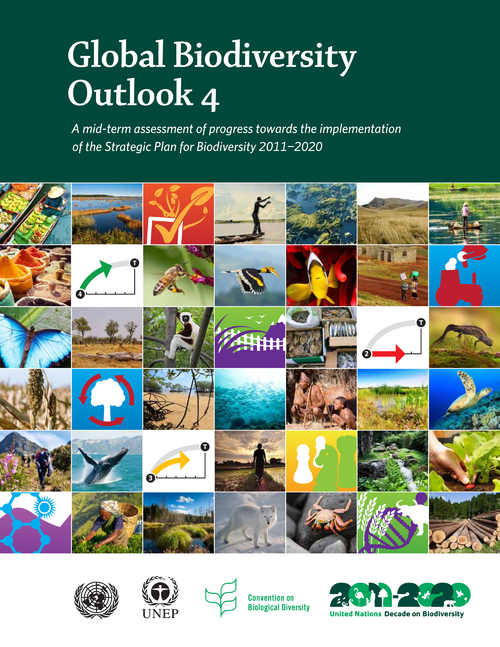 GBO 4 is a comprehensive report that serves as a mid-term analysis towards the 20 "Aichi Biodiversity Targets". The report states significant progress towards meeting some components of the majority of the Aichi Biodiversity Targets. Some target components, such as conserving at least 17 per cent of terrestrial and inland water areas, are on track to be met. However, in most cases this progress is seen as not sufficient to achieve the targets set for 2020, and additional action is required to keep the Strategic Plan for Biodiversity 2011–2020 on course.
GBO 4 is a comprehensive report that serves as a mid-term analysis towards the 20 "Aichi Biodiversity Targets". The report states significant progress towards meeting some components of the majority of the Aichi Biodiversity Targets. Some target components, such as conserving at least 17 per cent of terrestrial and inland water areas, are on track to be met. However, in most cases this progress is seen as not sufficient to achieve the targets set for 2020, and additional action is required to keep the Strategic Plan for Biodiversity 2011–2020 on course.
The full report can be accessed here: http://www.cbd.int/gbo4/
Full article available at: http://dx.doi.org/10.1186/1471-2105-12-S15-S1
Five projects focused on citizen science began their life in autumn 2012 as a part of the topic ENV.2012.6.5-1 "Developing community based environmental monitoring and information systems using innovative and novel earth observation applications". Their goals include developing novel technologies and applications in the domain of Earth Observation; exploiting portable devices (smartphones, tablets, etc.) and enabling effective participation by citizens in environmental stewardship based on broad stakeholder and user involvement in support of both community and policy priorities.
These projects are:
CITI-SENSE - aiming to empower citizens to both contribute towards, and participate in environmental governance, by developing up to 30 Citizens’ Observatories supporting a range of services related to environmental issues of societal concern with participatory sensing tools and methods being central.
OmniScientis - combining the active participation of the stakeholders, especially citizens, with the implementation of innovative technologies to improve the governance of odour nuisance. OMNISCIENTIS implements an odour monitoring and information system allowing feedback in real-time, based on a web-based Service Platform.
Citclops - developing an observatory based on citizens’ science applications for the bio-optical monitoring of coast and ocean. Specifically, the Citclops action develops systems to retrieve and use data on the colour, transparency and fluorescence of seawater using low-cost sensors and smart phones along with contextual information.
COBWEB - seeking to design, develop and validate the necessary software infrastructure to facilitate and make possible the opportunistic harvesting and quality control of crowdsourced environmental data.
WeSenseIt - enabling citizens to become active stakeholders in information capturing, evaluation and communication for the water environment including flood risk.
Together these projects will enable sharing of data and information through advanced data management strategies based on open e-collaboration, addressing questions of privacy, data standards, quality and reliability.
The Facebook page ‘Citizens’ Observatories’ group acts as one focal point for the development and promotion of ‘Citizens' Observatories worldwide‘ as an essential tool and a common perspective to better observing, understanding, protecting and enhancing our environment.
For more information on the diferent projects, please visit the dedicated Citizens' Observatories webpage: www.citizen-obs.eu
A memorandum of understanding has been signed between EU BON and Norwegian Institute for Nature Research (NINA). The hand over took place at the 21st GBIF Governing Board (GB21) in New Delhi (India) on 16-18 September 2014 between EU BON project co-ordinator Christoph Häuser and Roald Vang (Head of Department on Information technology) and Frank Hanssen from NINA.

IMAGE: At the handover: EU BON co-ordinator Christoph Häuser and Roald Vang (Head of Department on Information technology) and Frank Hanssen from NINA.
The Norwegian Institute for Nature Research (NINA) is Norway’s leading institution for applied ecological research, with broad-based expertise on the genetic, population, species, ecosystem and landscape level, in terrestrial, freshwater and coastal marine environments. The core activities encompass strategic ecological research integrated with long-term monitoring, as well as a variety of environmental assessments and development of methodologies. Most work is aimed at improving the understanding of biodiversity, ecosystem services, ecological processes and their main drivers to facilitate better management of ecosystem services and resources. NINA addresses a wide variety of interdisciplinary issues involving both ecologists and social scientists, and plays an important role in European and other international research cooperation.
Context:
The Earth's rapidly changing environment is putting critical ecosystem services at risk. There are many challenges involved in understanding global environmental changes, and in providing societies with the policy-relevant knowledge base to deal with them. These challenges will reach across many aspects of scientific endeavour. Indeed, the research community requires state-of-the-art research infrastructures (RIs) to have the capability to explain and predict global environmental changes. In this context the Experimentation in Ecosystem Research conference will provide a platform for discussions on cutting-edge technological tools, large-scale integrative experimental design, technical constraints, data access and last but not least ecosystem modelling. The conference will attract speakers and delegates from around the world and will offer opportunities to reinforce global cooperation.
Main topics:
- Grand challenges: With the current set of Experimental Research infrastructures in ecosystem science, do we have the capacity to tackle the grand challenges of today and tomorrow?
- In vitro and in natura : How realistic are they, and how they can be better linked?
- Technologies: Which emerging technologies could enhance (or are needed for) the performance and services offered by our RIs?
- Data: Towards an e-infrastructure for ecosystem research - challenges and opportunities
- Modelling: How accurate is our capacity to forecast and upscale, and what is missing? How can we communicate uncertainty? How do we strike the right balance between modelling and experiments?
The conference is organized under the framework of the European FP7 project ExpeER ( www.expeeronline.eu )
Find out more in the flyer attached below or on the event's website: https://colloque6.inra.fr/expeer-conference
Fauna Europaea started in 2000 as an EC-FP5 four-year project, delivering its first release in 2004. After 14 years of steady progress and successful participations in several EC projects, as a part of the EC-FP7 European Biodiversity Observation Network project (EU BON), to increase the general awareness of the work done by the contributors and to extend the general dissemination of the Fauna Europaea results, the Biodiversity Data Journal has applied its novel e-Publishing tools to prepare data papers for all 56 major taxonomic groups.
Fauna Europaea provides a public web-service with an index of scientific names (including important synonyms) of all living European land and freshwater animals, their geographical distribution at country level, and some additional information. The Fauna Europaea project covers about 230,000 taxonomic names, including 130,000 species name. This represents a huge effort by more than 400 contributing specialists throughout Europe and is a unique (standard) reference suitable for many users in science, government, industry, nature conservation and education.
'Contributio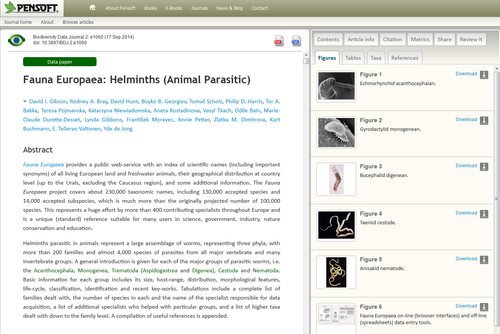 ns on Fauna Europaea' is the second series launched by the Biodiversity Data Journal after the Checklist of British and Irish Hymenoptera and the first one that embraces thematic data-papers structured in a common pattern extracted from a large database. This novel publication model will assemble in a single-issue 56 data-papers on different taxonomic groups covered by the Fauna Europaea project in the period 2000-2014 and a range of accompanying papers highlighting various aspects of this project (gap-analysis, software design, taxonomic assessments, etc.).
ns on Fauna Europaea' is the second series launched by the Biodiversity Data Journal after the Checklist of British and Irish Hymenoptera and the first one that embraces thematic data-papers structured in a common pattern extracted from a large database. This novel publication model will assemble in a single-issue 56 data-papers on different taxonomic groups covered by the Fauna Europaea project in the period 2000-2014 and a range of accompanying papers highlighting various aspects of this project (gap-analysis, software design, taxonomic assessments, etc.).
This is the first collection of data-papers of this scale. It will formalise and effectively publish the results of nearly 500 contributors building the largest European animal (taxonomic) database. The new publication model provides a reliable mechanism for citation and bibliographic indexing of large and uniformly structured databases.
"The publication of Fauna Europaea data papers brings a number of benefits for science, for example it stimulates experts to hand-over descriptive details on their groups, triggers new ways of community networking and participation, motivates experts to update their data, supports a better documentation of their achievements, including issues like 'micro-publications', and increase an ownership feeling with the associated effort" said Dr Yde de Jong, coordinator of the Fauna Europaea and Pan-European Species directories Infrastructure (PESI) projects.
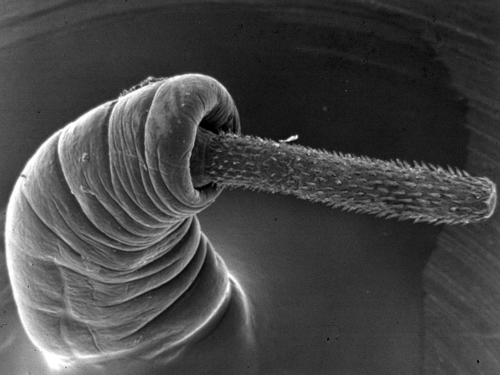 The launch of this large collection of data papers coincides with one more cutting-edge innovation of the Biodiversity Data Journal, the publication of an API, a first of its kind, to import complex and data-rich manuscripts, which include text, data, images, in-text citations, references, in fact anything that a manuscript may contain.
The launch of this large collection of data papers coincides with one more cutting-edge innovation of the Biodiversity Data Journal, the publication of an API, a first of its kind, to import complex and data-rich manuscripts, which include text, data, images, in-text citations, references, in fact anything that a manuscript may contain.
"I am happy that these exciting innovations coincided with the first birthday of the Biodiversity Data Journal. Just a year ago we launched this new concept with the motto: Making your data count! These novel approaches and tools are an excellent example how our concept evolved!" comments Prof. Lyubomir Penev, Managing Director of Pensoft Publishers.
Original Sources:
de Jong Y, Verbeek M, Michelsen V, Bjørn P, Los W, Steeman F, Bailly N, Basire C, Chylarecki P, Stloukal E, Hagedorn G, Wetzel F, Glöckler F, Kroupa A, Korb G, Hoffmann A, Häuser C, Kohlbecker A, Müller A, Güntsch A, Stoev P, Penev L (2014) Fauna Europaea – all European animal species on the web. Biodiversity Data Journal 2: e4034. doi: 10.3897/BDJ.2.e4034
Gibson D, Bray R, Hunt D, Georgiev B, Scholz T, Harris P, Bakke T, Pojmanska T, Niewiadomska K, Kostadinova A, Tkach V, Bain O, Durette-Desset M, Gibbons L, Moravec F, Petter A, Dimitrova Z, Buchmann K, Valtonen E, de Jong Y (2014) Fauna Europaea: Helminths (Animal Parasitic). Biodiversity Data Journal 2: e1060. doi: 10.3897/BDJ.2.e1060
The classical treatise "Flora of Northumberland and Durham" by Nathaniel John Winch is re-published through the innovative Advanced Books platform as an example of combining modern information technology together with historical scholarship to create a new sort of resource and data re-use. This publication will be supporting ongoing research on the botany of the region, which can be seen as a model for other regions in Europe.
The on-line semantically enriched re-publication marries the meticulous detail of old books with the interconnectedness of the internet bringing advantages of the digitization and markup efforts such as data extraction and collation, distribution and re-use of content, archiving of different data elements in relevant repositories and so on.
"Historic biodiversity literature is not just of cultural interest, it can be used to chart biogeographic change and help us understand the impacts of environmental change on biodiversity. Even if we are trying to predict future scenarios for biodiversity, understanding the changes of the past will help understand the changes we should expect in the future" said Dr Quentin Groom from the Meise Botanical Garden, Belgium, who initiated the project and marked up the original text.
 The North-east of England has seen many changes since the publication of Winch's Flora. In the 19th Century the area was a powerhouse of the industrial revolution. It was an important coal mining area and significant for the production of iron and steel. It was also a centre for industries such as shipbuilding and engineering. In contrast the uplands in the west of the region were some of the most isolated areas in England, covered in blanket bog and rarely visited.
The North-east of England has seen many changes since the publication of Winch's Flora. In the 19th Century the area was a powerhouse of the industrial revolution. It was an important coal mining area and significant for the production of iron and steel. It was also a centre for industries such as shipbuilding and engineering. In contrast the uplands in the west of the region were some of the most isolated areas in England, covered in blanket bog and rarely visited.
Since that time heavy industry and mining have declined, but the population has continued to grow. Agriculture and forestry have become mechanized changing the countryside perhaps beyond the recognition of Winch. Many of the plants and localities he mentions have disappeared and a large number of new species have been introduced. The local botanists are still very active in the region. With GPS systems and modern maps they are mapping the region's flora in ever more detail.
The extensive efforts of Quentin Groom from the Botanic Garden Meise and editor of this re-publication combined with the cutting-edge technologies for semantic enhancements used by Pensoft's Advanced Books platform, have resulted in additional details including links to the original citations and coordinates of the mentioned localities. In some cases the habitat that Winch described for a locality differs dramatically from what can be found in the same location nowadays.
The flora, for example, frequently mentions Prestwick Carr, an area of lowland bog, once full of rare species. Sadly it was largely drained just thirty years after the publication of the flora. Yet in recent years the Northumberland Wildlife Trust has been working to restore the bog to its former glory. "When reading Winch's flora, it is easy to see what has been lost, but more importantly what remains to be conserved", comments Groom.
The re-publication of Winch's flora is just one step towards fully understanding all the impacts on wild plants of all the environmental changes that have occurred since the 19th century. Nevertheless, digitization of this flora not only tells us about plants but also about the history of science. Between the lines of this flora one can see a rudimentary understanding of ecology and the beginnings of research on phytogeography.
Consider that in 1831 Charles Darwin set sail on the Beagle, collecting and cataloguing biodiversity around the world, much as Winch had done in North-east England over the preceding 30 years. Field botany at the time was not just a hobby, but a serious pursuit that led to many new discoveries.
Understanding the causes of biodiversity change is only possible if you have data over a long period. The North-east England has an enviable botanical history dating back to William Turner (1508-1568), the so-called, Father of English Botany, who came from Morpeth in Northumberland. Yet he was only the first in a long list of North-eastern botanists, including John Wallis (1714-1793), Nathaniel John Winch (1769-1838), John Gilbert Baker (1834-1920), George Ralph Tate (1805-1871), Gordon Graham and George Swan (1917). Their publications and the works of many others have contributed to a large corpus of literature on the region's flora.
The August 2014 updates of FishBase are now available online!
See: www.fishbase.us, www.fishbase.ca, www.fishbase.sa
FishBase stats to date: (32900 Species, 303000 Common names, 54800 Pictures, 51400 References, 2150 Collaborators, 800000 Visits/Month)
Thanks for your continuous patronage and support!

The third issue of the EU BON newsletter is now out.
This issue contains information about our new associated partners, alongside news from the project, interviews and articles from international and project meetings, as well as announcements for future events of interest.
To download the newsletter, please click on the image below.
It is also available for download in the project’s Media Center alongside the previous 2 issues.
The Creative-B project final even will take place on 26 Sep 2014 in Brussels. During this event, a roadmap of global data infrastructures supporting biodiversity and ecosystem research will be presented.
In the last two decades quite a number of activities emerged to manage, share and deploy the fast growing data volumes from observations, collections, sensors and other data sources in biodiversity and ecosystem research. This data "gravity" pushed new applications and services, resulting in the development and establishment of large-scale research infrastructures. Following an initiative of the European LifeWatch research infrastructure, a number of large-scale data research infrastructures* with a global outreach in this scientific area teamed together in the project Creative-B (Coordination of Research e-Infrastructures Activities Toward an International Virtual Environment for Biodiversity)**.
The collaboration resulted in drafting a global Roadmap focusing on common priorities and infrastructure engagement, enhancing infrastructure interoperability, and the legal and governance implications. Specific issues are addressing challenges to sustain data availability and services, user interaction and value delivery, cooperation for infrastructure interoperability as well as legal interoperability, and finally education and training. This Roadmap shows how global interaction is promoting complementary development while fostering synergy for supporting frontier research and addressing global and societal challenges. The event in Brussels will also highlight some implications for other stakeholders such as funding and governmental bodies.
Registration is now open here: http://creative-b-2014.sciencesconf.org/registration
Find out more on the event website, and in the event program.
ECOSCOPE (Network of Biodiversity Research Observatories) associates the SINP (Information System on Nature and Landscapes) to a shared event that will focus on the complementarity between "research - expertise" on biodiversity through the emerging concept of "Essential Biodiversity Variables" (EBVs).
The seminar, scheduled for Monday, November 3, 2014 in Paris, is open to scientists, observatories’ managers and their teams, and to all who are involved in the study of the state and dynamics of biodiversity for research and expertise.
The aims of this seminar are to increase awareness and understanding of EBVs, their interest for observatories (visibility, synergies) to benefit to observatories’ scientific managers and data users. It is also to define how this concept can be implemented at national scale, in connection with international initiatives.
Programme will be available in available in September, for registration: follow the link !
EU BON is pleased to welcome a new associated partner Long-Term Ecosystem Research (LTER) Europe to its family!
Long-Term Ecosystem Research (LTER) is an essential component of world-wide efforts to better understand ecosystems. This comprises their structure, functions, and long-term response to environmental, societal and economic drivers. LTER contributes to the knowledge base informing policy and to the development of management options in response to the Grand Challenges under Global Change.
From the beginning (around 2003) the design of LTER-Europe has focussed on the integration of natural sciences and ecosystem research approaches, including the human dimension. LTER-Europe was heavily involved in conceptualizing socio-ecological research (LTSER). As well as LTER Sites, LTER-Europe features LTSER Platforms, acting as test infrastructures for a new generation of ecosystem research across European environmental and socio-economic gradients.
The 3rd International Conference on Biodiversity and the UN Millennium Development Goals will take place between October 29-31, 2014 in Aix-en-Provence, France. under the tematic title "Biodiversity and Food Security – From Trade-offs to Synergies".
This conference is the third in a series, organized by the French CNRS Institut Ecologie et Environnement (InEE) and the German Leibniz Association (WGL). The conference is based on invited keynotes and contributed posters for any of the topics relevant to the conference theme. Keynote speakers are now confirmed, including Professor José Sarukhán, UNAM, México, and Professor Jacqueline McGlade, UNEP, Nairobi.
Across scales from genes to species, landscapes and biomes, biodiversity is an important resource for humanity. It is the key for a broad range of services provided by ecosystems. Biodiversity helps regulate the nutrient cycle, water (e.g. floods) and mitigates impacts of climate change. Biodiversity is also of direct importance for human well-being and for cultural and other values including recreation. The provisioning of clean water and diverse food supply makes it vital for all people.
Biodiversity at all levels, including the diversity of genes, species and ecosystems, is lost at alarming rates. Critical factors for these trends are habitat destruction, global warming and the uncontrolled spread of alien species. Pollution, nitrogen deposition and shifts in precipitation further affect biodiversity.
Food security faces significant challenges due to population growth, poverty, globalization, climate change and other factors. Supplying healthy food to all citizens is crucial for global development - to reach it, not only food production but also equitable access to food for all people must be improved substantially. Biodiversity loss and global food security are hence two major challenges of our time.
Linking biodiversity and food security issues from a research perspective, and seeking synergies between them is likely to generate multiple benefits for social, ecological and economic development.
Follow this link to register, submit your abstract and secure your hotel reservations.
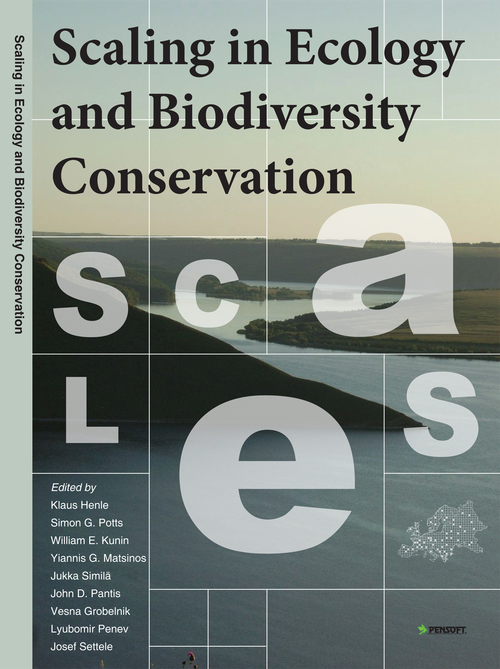 Results are also presented in an easy to use interactive SCALETOOL, specifically developed for the needs of policy and decision-makers. The tool also provides access to a range of biodiversity data and driver maps compiled or created in the project.
Results are also presented in an easy to use interactive SCALETOOL, specifically developed for the needs of policy and decision-makers. The tool also provides access to a range of biodiversity data and driver maps compiled or created in the project.

EU BON is happy to announce that Memoranda of Understanding have been signed with four new associated partners. The EU BON family is now joined by DataOne (Observation Network for Earth), USA; Fondation pour la Recherche sur la Biodiversité (FRB) / ECOSCOPE, France; Atlas Florae Europaeae (AFE), Finland; and the Natural Environment Centre / SYKE (Finnish Environment Institute), Finland. Welcome to all!
DataOne (Observation Network for Earth)
 DataONE is the foundation of new innovative environmental science through a distributed framework and sustainable cyberinfrastructure that meets the needs of science and society for open, persistent, robust, and secure access to well-described and easily discovered Earth observational data.
DataONE is the foundation of new innovative environmental science through a distributed framework and sustainable cyberinfrastructure that meets the needs of science and society for open, persistent, robust, and secure access to well-described and easily discovered Earth observational data.
Fondation pour la Recherche sur la Biodiversité (FRB) / ECOSCOPE
 ECOSCOPE is a national network for long-term observation of biodiversity supported by the French Alliance for Research in Environment. ECOSCOPE aims at coordinating and reinforcing biodiversity observatories through specific actions to contribute to national and global efforts 1 / to support research in understanding and anticipating state and changes in biodiversity and associated ecosystem services and 2 / to provide information and synthesis to support decision making. It has been labelled BON in 2012.
ECOSCOPE is a national network for long-term observation of biodiversity supported by the French Alliance for Research in Environment. ECOSCOPE aims at coordinating and reinforcing biodiversity observatories through specific actions to contribute to national and global efforts 1 / to support research in understanding and anticipating state and changes in biodiversity and associated ecosystem services and 2 / to provide information and synthesis to support decision making. It has been labelled BON in 2012.
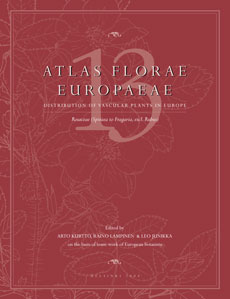 Atlas Florae Europaeae (AFE) is a running long-term programme for mapping the distribution of vascular plants in Europe. The project was launched already in 1965 as a collaborative effort of European botanists and since then the Secretariat was established at the Botanical Museum of the Finnish Museum of Natural History, Helsinki.
Atlas Florae Europaeae (AFE) is a running long-term programme for mapping the distribution of vascular plants in Europe. The project was launched already in 1965 as a collaborative effort of European botanists and since then the Secretariat was established at the Botanical Museum of the Finnish Museum of Natural History, Helsinki.
The original aim of the AFE is to offer complementary maps with taxonomic notes of species and subspecies for the published Flora Europaea.
Natural Environment Centre / SYKE (Finnish Environment Institute)
 The Finnish Environment Institute (SYKE) promotes the conservation of biodiversity by various measures, e.g. by assessments of the conservation status of species and natural habitats or by research on methods of management and restoration of habitats. An important field of research is the significance of ecosystem services and their interactions with biodiversity. SYKE's tasks also include finding solutions to problems with invasive species, assessment of the environmental impacts of genetically modified organisms and permits for international trade in endangered species.
The Finnish Environment Institute (SYKE) promotes the conservation of biodiversity by various measures, e.g. by assessments of the conservation status of species and natural habitats or by research on methods of management and restoration of habitats. An important field of research is the significance of ecosystem services and their interactions with biodiversity. SYKE's tasks also include finding solutions to problems with invasive species, assessment of the environmental impacts of genetically modified organisms and permits for international trade in endangered species.




 RSS news
RSS news



 Flyer: Citizens' Observatories
Flyer: Citizens' Observatories













